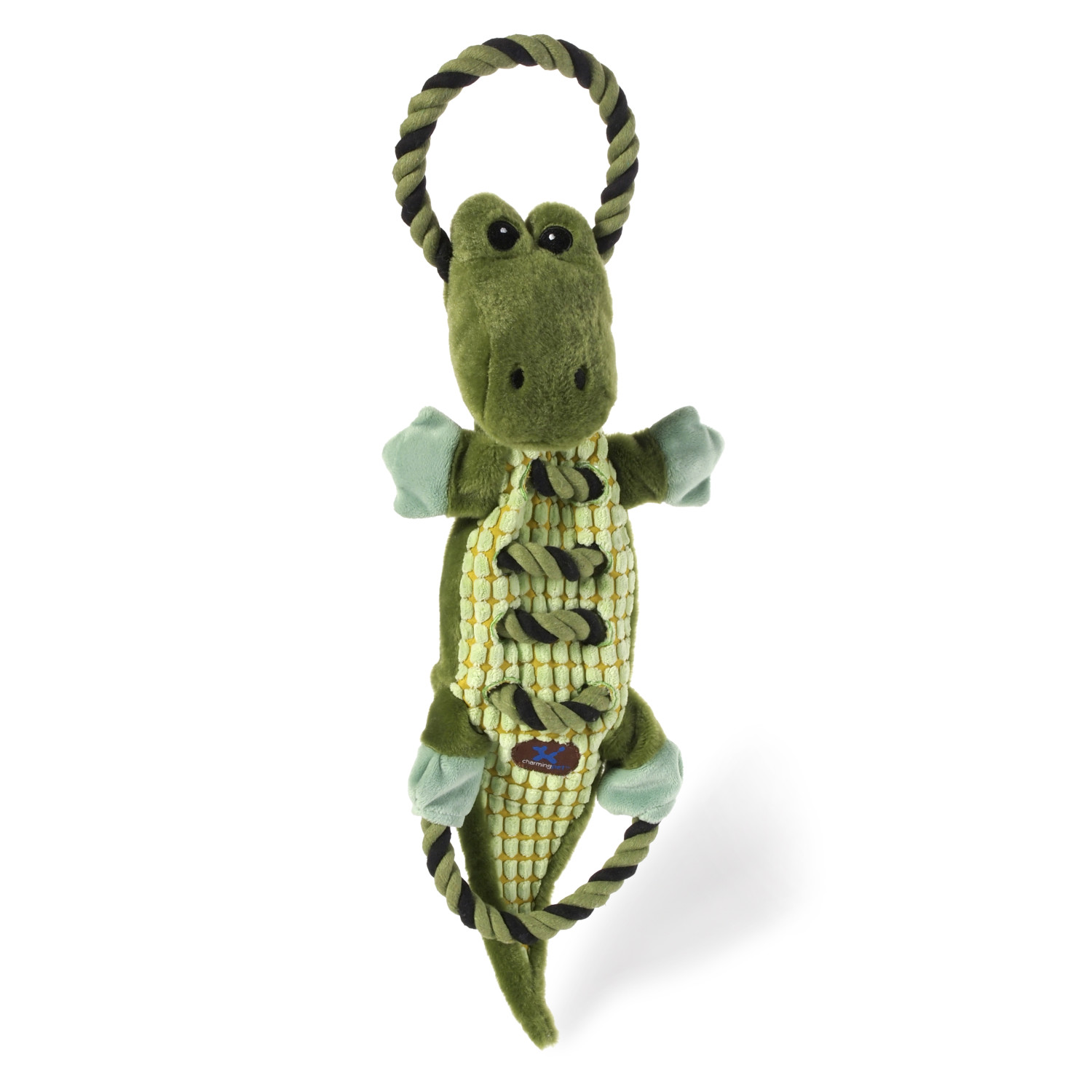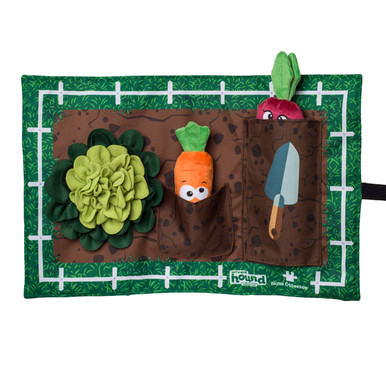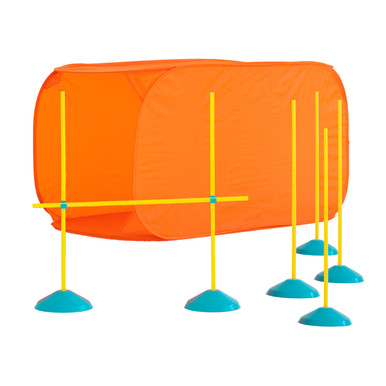Daily walks are essential for a dog’s wellbeing. Exploring the great outdoors provides a mix of mental and physical stimulation that can’t be matched by indoor activities. How to give your dog exercise indoors can help if you can’t get outside.
Sometimes a long walk isn’t possible. Extreme hot or cold weather can make walking unsafe, especially for puppies or elderly dogs. Dogs recovering from illness or surgery may also be unable to spend much time outdoors. Then there are special needs dogs with severe anxiety who can’t handle the stimulus overload.
There’s no such thing as a doggie gym for your pet to burn off extra energy. But there are many ways to give your dog more exercise without long walks, including the six examples below.
Note: Not all of these activities are suitable for every dog. Make sure you know your dog’s limits, and consider his age, health, breed, and training before any activity.
1. PLAY TUG-OF-WAR

Tug-of-war is a classic game to play with your dog. Many dogs love this game, and it can burn plenty of energy without going outdoors.
Contrary to popular belief, playing tug-of-war won’t make your dog aggressive or dominant – as long as the game is managed correctly. In fact, research has shown it can improve the dog-owner bond.
Make sure your pet has a strong “give” command, however, so you can interrupt the game when he gets over-stimulated. It’s also important to shake horizontally, as pulling your pet’s neck up and down can be dangerous.
Tug-of-war isn’t suitable for puppies though, as their jaws are still developing. It’s also not the best choice for dogs with existing resource-guarding issues or who easily get over-excited.
Ropes-A-Go-Go Interactive Plush Dog Tug Toy
$19.99 $8.50
Outward Hound’s Ropes-A-Go-Go characters are adorable, multi-sensory interactive dog toys that your pup is bound to befriend! Constructed with soft plush, corduroy, and twisted rope material for a cozy yet tough dog toy that can last through multiple play sessions. Stuffed with crinkle paper and three squeakers that will keep your pup engaged for hours! Grab the rope loops for a fun game of tug-of-war or…
2. INSTALL A DOG DOOR FOR ADDED FREEDOM
One way to give your dog more time outdoors is to install a dog door leading to your garden. The best options have an electric design, so they open for your dog but not for other animals. You can also set “curfew” times when your dog isn’t allowed outside.
Garden time can’t replace a walk, but it can give your pet more freedom. It’s also useful if you’re going to be out, although it’s not fair to leave a dog alone for more than a few hours.
Of course, a dog door might not be appropriate during hot weather. Dogs aren’t always sensible when it comes to staying cool! Make sure you check your yard is completely secure before buying a door, as dogs can be surprisingly creative when it comes to escaping.
3. TEACH YOUR DOG HOW TO PLAY WITH FLIRT POLES

Flirt poles are a great way to provide physical exercise without going outdoors, which is why many experts use them during hot or cold weather (assuming the room is air-conditioned).
A flirt pole has a stick attached to a rope, with a toy at the end. The long design allows you to use it as a lure for your dog. Once he catches the lure, you can ask him to release it in return for a treat.
As with tug-of-war, it’s important that your dog has a strong “give” command when playing with a flirt pole. This allows you to stay in control of the game while teaching impulse management.
Tail Teaser Dog Wand Lure Toy
$0.00 $8.50
Lure in the fun with Outward Hound Tail Teaser dog wand! Whether your existing lures are worn out or you’re looking to switch up the style, this replacement piece keeps the fun going. Compatible with the Tail Teaser dog training wand, the replacement attaches easily by looping the two ropes together; no tools required! Squeaky sounds keep dogs interested, while the faux fur body triggers dogs’ prey drive…
4. INDOOR TREAT HUNTS
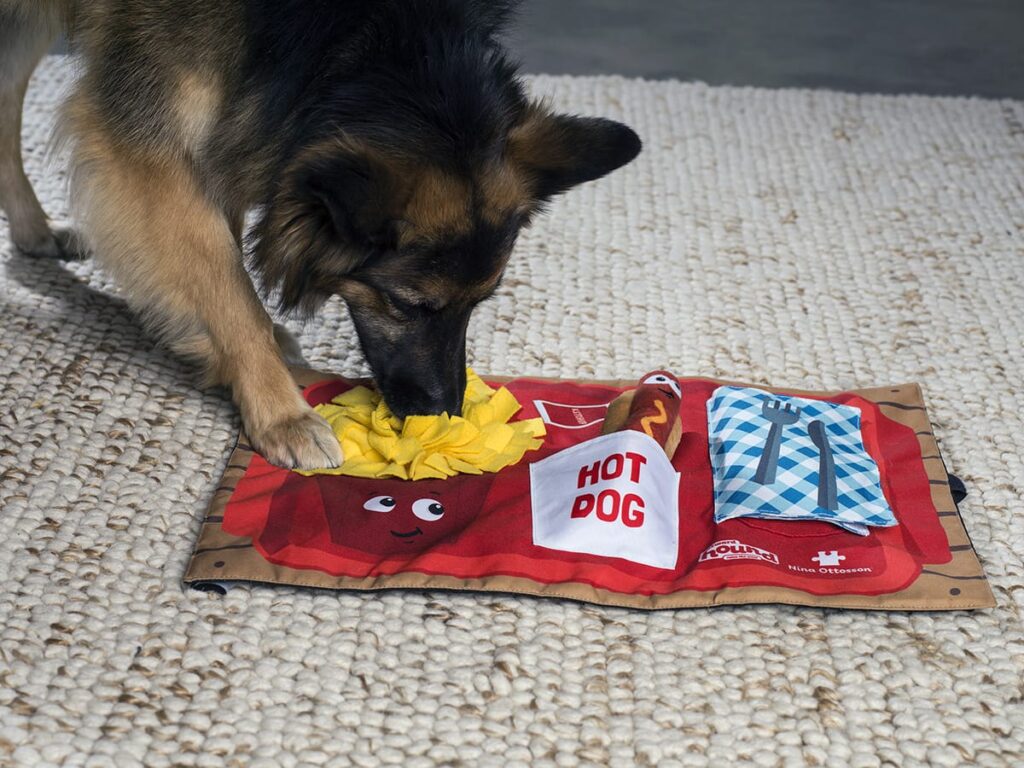
Indoor treat hunts and sniffaris are a brilliant way to encourage your dog to use his sense of smell. Gather some kibble or small treats, then hide them in various places around the house. Your dog will have lots of fun charging around trying to find them all.
You might want to make the hiding places easy until your dog gets the idea. As he improves, you can make the game more challenging.
Activity Matz Garden Game Dog Puzzle Mat, Multi
$29.00 $15.00
Outward Hound Activity Matz are fun to use, easy to clean, and perfect for both mental and physical exercise. The Garden Game activity mat comes with optional closures to level up the challenge! Once your dog has sniffed out the treats or kibble from the plush material, increase the challenge by placing food in the pockets and hiding them under an extra layer by stuffing in the carrot. For an even harder…
5. PRACTICE OBEDIENCE OR TRICK TRAINING
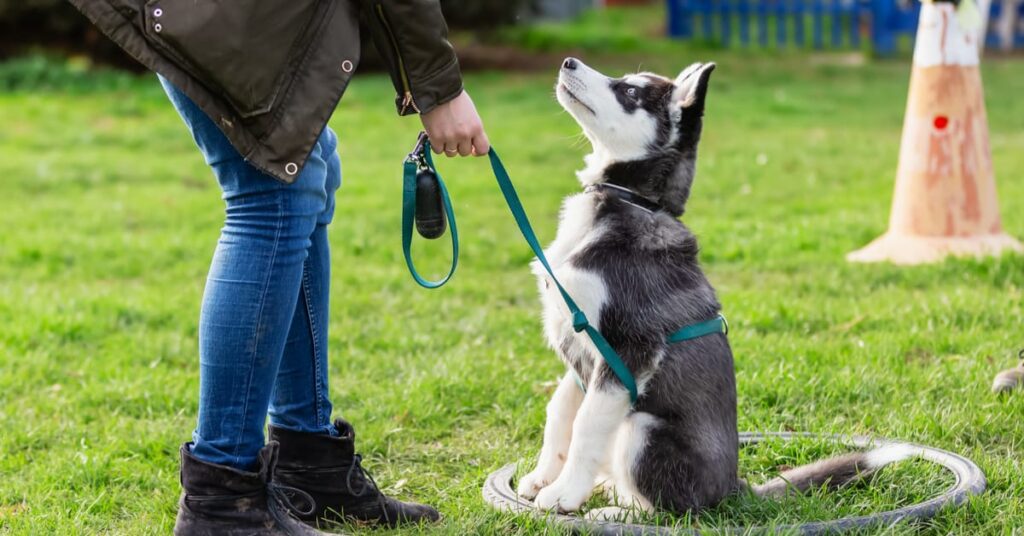
Many dogs love training – especially when tasty treats are involved! It’s also a tiring activity, as your dog has to concentrate to try and decipher what he’s meant to do.
Start with basic commands, such as sit, stay, down, and give. Once your dog knows these, there are endless tricks to learn, such as spin, roll over, shake hands, and many more.
Try to keep training sessions short and fun. If you or your dog start to get frustrated, it’s time to take a break.
6. CREATE AN INDOOR OBSTACLE COURSE
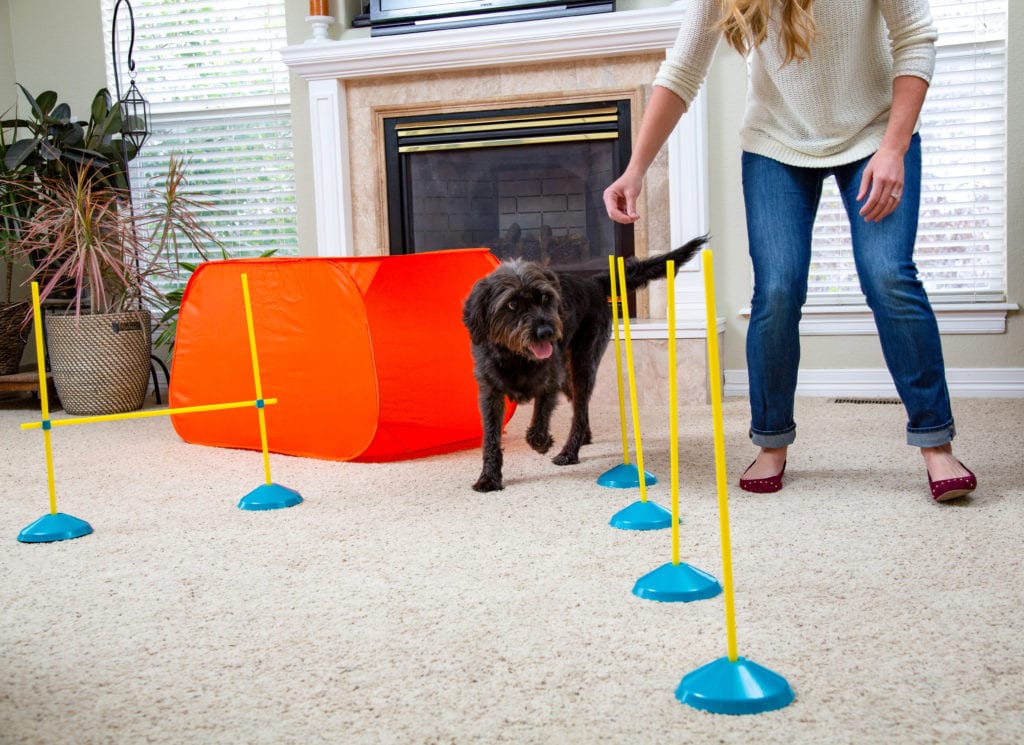
With a bit of imagination, many items around the house can form part of an indoor obstacle course for your pet. You could ask your dog to duck under a coffee table, for example, or jump a stick rested between two chairs.
While indoor obstacle courses are a brilliant way to give your dog more exercise, be careful and make sure your dog has enough grip.
Zip & Zoom Indoor Dog Agility Training Kit for Dogs, Multi
$44.99 $30.99
The Outward Hound Zip & Zoom Indoor Agility Kit is an interactive way to keep your dog both mentally and physically active while indoors! Great for use in teaching your dog new tricks and commands as well as just for pure fun. The kit features a training booklet, one square collapsible tunnel, four weave poles, and an adjustable jump that can be taken apart and used as two more individual weave poles…
PLAY MENTALLY TIRING GAMES WITH YOUR PUP
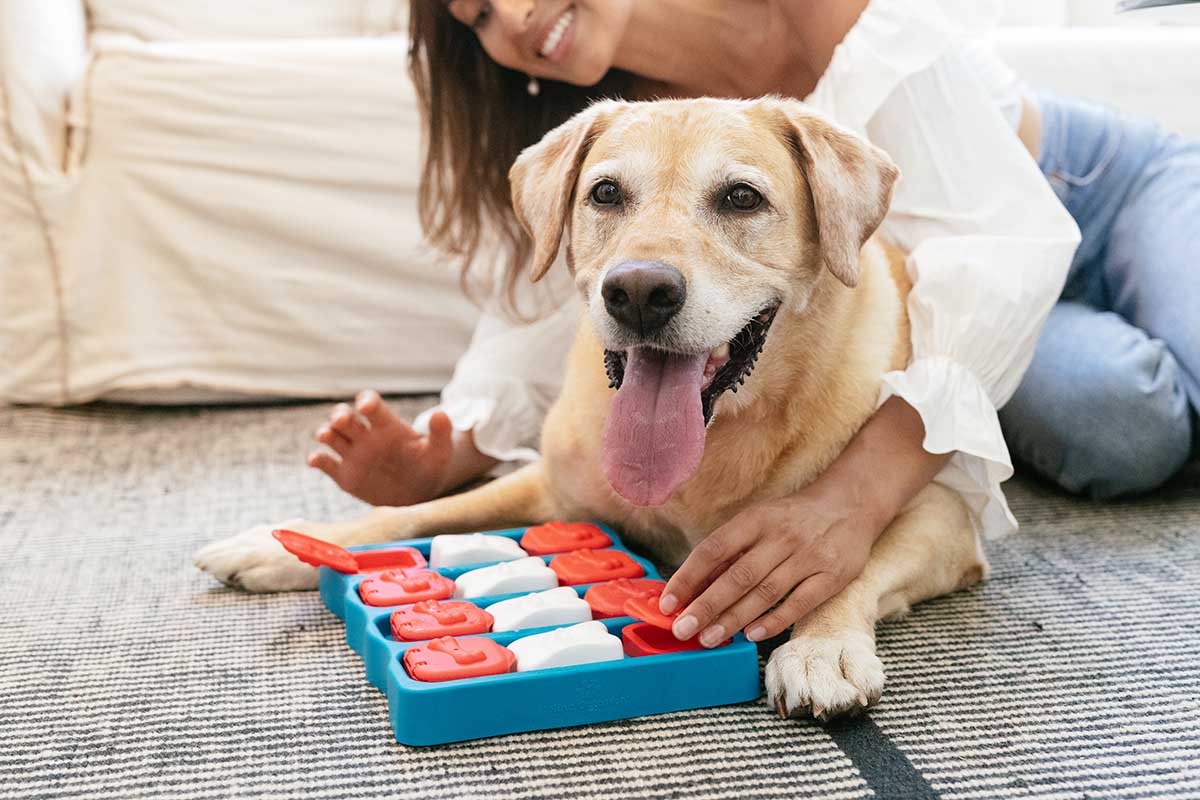
Physical exercise is vital for a dog’s health, but mental stimulation is just as important. In fact, dogs often find mental games and activities to be just as tiring as exercise!
We’ve already talked about indoor treat hunts and trick training, but there are plenty of other mentally stimulating games to play. A few examples include:
- Snuffle Mats – These force your dog to use his nose to sniff out kibble or treats.
- Which Hand? – Pick a tasty treat and hold it in one fist. Show your dog both fists, but only reward him when he sniffs out the correct hand.
- Hide and Seek – Ask your dog to “wait,” then go and hide somewhere in the house. Once you’re hidden, call him to find you, then give a tasty treat when he succeeds.
- Puzzle Toys – A puzzle toy makes your dog think about how to access his food, rather than just gobbling it up.
The activities in this article can’t replace a walk, but they can give your dog more exercise or mental stimulation when a long walk isn’t possible.
Remember, a bored dog is much more likely to show negative behaviors, such as becoming destructive or barking. Even a short game can improve your dog’s mental and physical wellbeing.
Written by Richard Cross
